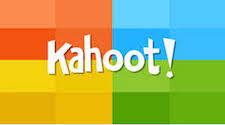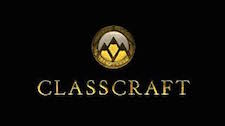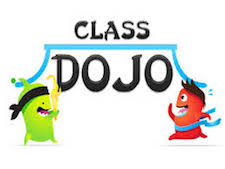Four Tools to Help Gamify Your Classroom
 By Curtis Chandler
By Curtis Chandler
My wife and I were at Walmart this month, trying to save a few bucks at the store’s annual Teacher Appreciation Sale. Like the other 10,000 or so teachers there that day, our cart was loaded with craft foam, construction paper, colored pencils, spiral notebooks, and enough bulletin board bordering to circumnavigate the globe.
As we were checking out, two of our sons came up and asked if we had any money. Now, for the record…I have never given my boys a cent for stale gumballs, fake tattoos, cheap jewelry, sticky-stretchy hands…or anything else displayed in a coin-operated machine.
But at that very moment, the cashier handed me 19 cents in change. My sons looked at me, looked at the change, and then looked at me again. I was busted.
I admitted that I did have a few coins, but insisted that it wouldn’t be enough for candy or anything. The older of the two boys shook his head and then said, “Nah, Dad…we don’t want candy. We’re gonna’ save a kid’s life.”
Confused, but intrigued, I handed them the coins and then observed from a distance. I watched them walk up to an upside-down umbrella that was suspended from one of the store’s ceiling tiles. It seemed to float about three feet over their heads. Taped to the umbrella was a sign that read, “Toss in a coin…and help save a child’s life!”
They divided up the pennies and nickels and began tossing them free-throw style into the umbrella. They missed on the first couple of tries, but soon got the hang of it. When the novelty started to wane, they tried to see just how far they could get from the umbrella and still make it in. I turned to my wife, and sheepishly asked if she had had any change so that I might give it a try.
Gamification Defined (by me)
Walmart’s Teacher Appreciation Day Sale and the ‘umbrella incident’ are both examples of gamification, or the use of game elements in everyday activities (Deterding et al., 2011).
Walmart, for example, encourages teachers to shop by promising them added savings if they show up on a certain date and time. In the world of game design, this is referred to as an appointment dynamic. Similarly, while some individuals willingly donate spare change, others—such as myself—will only do it if there is some sort of challenge, such as tossing coins into an upside-down umbrella.

We aren’t talking about higher level learning here, but rather a way to take the ‘ew’ out of ‘review.’ With this goal in mind, below are four tried-and-true tools to help teachers ‘funify’ their classroom activities.
Quizizz
Quizizz is free tool that allows teachers to quickly turn introductory and review activities into fun, multiplayer activities for students. It works on any device with a browser, and allows you to create your own activities or to use those already made by other educators. No usernames or passwords are required.

Quizziz has some unique features that most free gamification tools don’t. For example, Quizizz is designed to be student-paced, rather than teacher-driven. The teacher dashboard provides excellent real-time updates of student progress, but also allows teachers to customize each learning activity.
There are options that allow you to jumble the question order, decide if you want to use timers and leaderboards, and even provide a list of correct questions and answers at the end of the quiz. Quizizz injects quiz-taking with a bit of badly needed fun. Equally important…it provides teachers with excellent feedback on how their students are doing.
Kahoot
I have written about Kahoot before in a previous post, but will mention it again due to its continuing popularity among teachers and students. Like Quizizz, it works from any device with an internet browser and makes it easy for teachers to turn objective-based learning tasks into games that students can play.

When it comes to checking student understanding, Kahoot is by far still one of the slickest gamification tools for teachers.
Classcraft
Classcraft prides itself in being a tool designed to change how you teach rather than what you teach. It does this by adding a ‘game layer’ on top of your classroom. The teacher’s role is to run the game and to award points based on student participation and/or successful completion of assigned challenges and learning activities. Each student gets his or her own character, or avatar, which ‘levels up’ as students accumulate more and more points. As students move through the activities, teachers get real time updates on their students’ progress.

One of the best features in Classcraft is its focus on collective accountability. Just like in other Role Playing Games, students are encouraged to work together in teams and are accountable to their teammates. As a result, it’s more difficult for students who might try to slack off or fly under the radar. Classcraft is a potentially powerful tool for changing the way that students interact with the content and with each other.
Class Dojo
Teachers who are interested in Classcraft but who are on the hunt for something simpler might explore Class Dojo. Class Dojo is a tool that is often overlooked by middle school teachers, largely due to its use of cartoon-like characters that seem geared towards younger students.

Teachers simply set up a class and assign each student an avatar. They then designate any number of positive or negative behaviors that are tracked using the teacher’s computer, iPad or smart phone. Points can be awarded or subtracted at any time and are updated on a master chart that can be projected for the class to see or kept private to be shared with them later on.
Class Dojo also provides a number ways to keep teachers, students, and parents up-to-date. There are reports that help track student progress and a variety of communication tools including an instant-broadcast feature and a two-way message system to share updates and photos with parents. Teachers can even choose to get alerts when their messages are read by students’ parents at home.
From Mundane to Fun-dane
While not everything can be fun and games, more of what we do in schools should be. Part of getting more out of our students is finding ways to connect with their interests. Students may not always like school, but nearly all of them play some type of game (Lenhart, 2008). With the right tool we might be able to do what games do—to get students to participate in challenging tasks…and to have fun doing it.
References
• Deterding, S., Dixon, D., Khaled, R., & Nacke, L. (2011, September). From game design elements to gamefulness: defining gamification. In Proceedings of the 15th International Academic MindTrek Conference: Envisioning Future Media Environments (pp. 9-15). ACM.
• Lenhart, A., Kahne, J., Middaugh, E., Macgill, A., Evans, C., & Vitak, J. (2014). Teens, video games, and civics. Washington, DC: Pew Internet & American Life Project; 2008.
Dr. Curtis Chandler (@CurtisChandler6) is an education professor at Brigham Young University-Idaho in Rexburg ID and was the 2011 Kansas Teacher of the Year. “I am a middle school teacher through and through,” he says. “My teaching has been 90% grade 6-8.” At his personal blog, Prescriptions for Education, Chandler often writes about “capacity building tools for educators and administrators.” He is a regular MiddleWeb contributor.





































